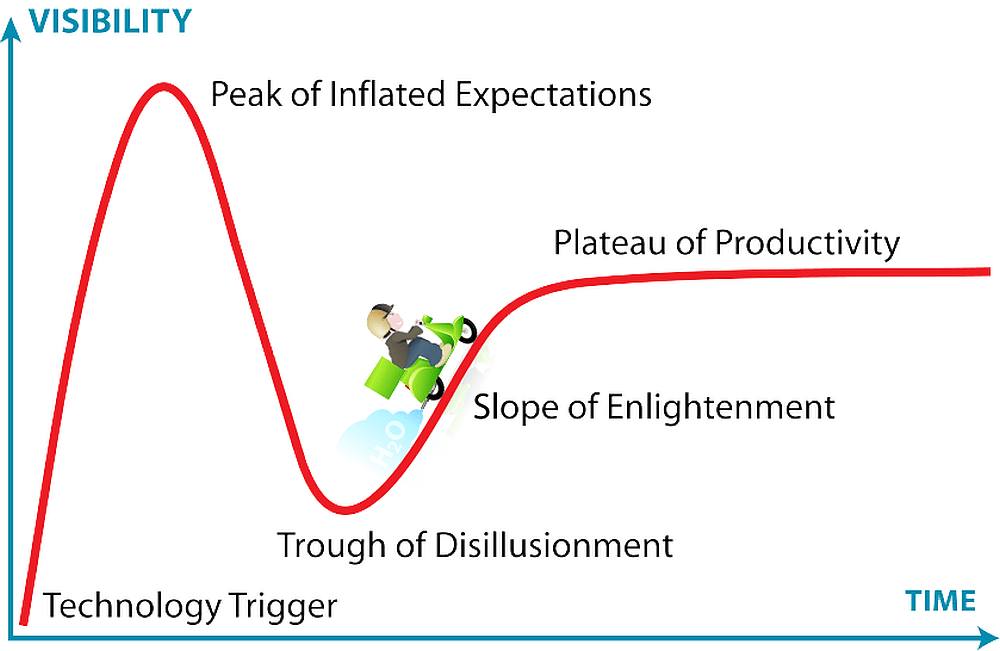
[Image above] Example of the 2024 Tesla Cybertruck Foundation Series, which weighs in at 6,669 lbs. Credit: Mr.choppers, Wikimedia (CC BY-SA 3.0)
Thanks to mature technology, expanded options, and federal tax credits, the price for electric vehicles has dropped considerably in recent years, bringing this technology into the realm of affordability for many more consumers.
But as the price for electric vehicles has gone down, the size of electric vehicles has started to creep up. Imagine the Cybertruck, which by now you’ve probably seen thundering down the roads. At almost 7,000 pounds, they’re hard to miss.
Although the Cybertruck is better for air quality than a similar-sized internal combustion engine truck during operation, manufacturing the supersized battery and components produces considerable emissions. This fact begs the question—are supersized EVs really better for the planet?
Supersized vehicles in US culture
Anyone who has visited the United States will notice that things tend to be “bigger” here: houses, food portions, and even the people themselves. That same mentality extends to the vehicles many of us drive.
Since reaching a low point in 1987, the average weight of cars in the U.S. has increased by one-third. Part of this size expansion can be contributed to several federal policies passed after the 1970s oil embargo, which favored larger vehicles.
Today, the average car in the U.S. gets about twice as many miles per gallon as it did in 1975. But because of our continued preference for supersized cars and personal vehicles over public transit, our gains in the fuel economy and CO2 savings are lower than they could be.
Downsides of supersized vehicles
Simple physics tells us that larger vehicles are more dangerous. Newton’s second law states that a heavier object moving at the same speed as a smaller object will have more force upon impact. When applied to cars, this law indicates that a supersized vehicle will cause more damage to pedestrians, other vehicles, and stationary objects (like guardrails) during collision.
Furthermore, the increased height and bulk of supersized vehicles can obstruct sightlines, making it harder for drivers to see pedestrians, especially smaller individuals or children. This limitation makes collisions more likely, not to mention that the vehicle’s massive weight will put increased stress on bridges and overpasses. And then there’s the increased environmental cost of mining materials for all the supersized components.
In some ways, these downsides are even more acute for supersized EVs.
Concerns for pedestrian safety
Electric vehicles are quiet. In fact, they are so quiet that they are required to produce an artificial noise at low speed. Their lack of noise can make them difficult for distracted pedestrians or bicyclists to hear, and as they grow larger, they can do more harm in a collision. One study found that pedestrian collisions with electric vehicles were almost twice as common as pedestrian collisions with gas cars.
Damage to infrastructure
Like cargo trucks, heavier electric vehicles can place increased stress on road surfaces and bridges. In the United States, our aging infrastructure is an acknowledged issue. Many highway repair programs are funded by state gasoline taxes. As electric vehicle use goes up, gasoline tax receipts go down. A different highway maintenance funding scheme is needed.
In addition to being heavier, electric vehicles have lower centers of gravity than gasoline-powered cars. These differences have raised concerns that existing highway guardrails may be insufficient to stop many electric vehicles.
Environmental concerns
The environmental benefits of electric vehicles during operation must be offset by the costs of mining and refining the necessary materials. The larger the vehicle, the greater the demand for raw materials.
Electric vehicle batteries, particularly, present environmental challenges. Research on solid-state lithium-ion batteries is promising, and these innovative designs will be less prone to short circuits or overheating. The solid electrolytes in these batteries are often made of a ceramic material because these materials can increase the energy density of the battery.
Solid-state batteries suffer from instability caused by the electric double layer effect, which remains poorly understood. However, safer solid-state batteries should be available within the next few years.
These batteries will, by necessity, continue to rely on nickel, cobalt, and copper, if not lithium. Metal mining is resource-intensive, and the tailings (leftovers from the mining process) can leach toxic chemicals into the ground. Lithium extraction uses a lot of water because it is produced by evaporation.
All extractive industries have environmental effects. Water sources may become contaminated, and other ecological impacts can cause habitat loss and conflicts over land use.
The climate costs of supersized electric vehicles
In January 2025, Perry Gottesfeld, executive director of the nonprofit Occupational Knowledge International, published an open-access opinion piece in PLOS Sustainability and Transformation analyzing the tradeoff between climate costs and benefits of supersized electric vehicle production and operation.
“To better align car purchasing with the goal of reducing greenhouse gas emissions, we need to educate consumers that replacing a conventional vehicle with an EV may not necessarily be reducing their emissions,” Gottesfeld said in an interview with Cosmos.
He concluded that supersized EVs are “failing to substantially reduce greenhouse gas emissions” in comparison to small conventional vehicles, and so improved public policy, incentives, and messaging are needed to drive consumer demand to smaller EVs.
Future trends in supersized electric vehicles
Based on automotive history, it is likely that supersized electric vehicles will continue to be popular in the U.S. To combat the downsides of these vehicles, manufacturers will need to invest heavily in the concept of lightweighting, i.e., using a combination of advanced materials and innovative design techniques to reduce the weight of electric vehicles.
Ceramics can help support the goal of lightweighting. As explained in The Engineer article by Zircotec engineering director Dominic Graham, current battery assembly components are manufactured using heavy-duty steel. Innovative ceramic coatings could enable the use of lightweight materials instead, such as aluminum and plastic composites for EV battery enclosures and cooling plates.
Author
Becky Stewart
CTT Categories
- Market Insights
- Transportation


